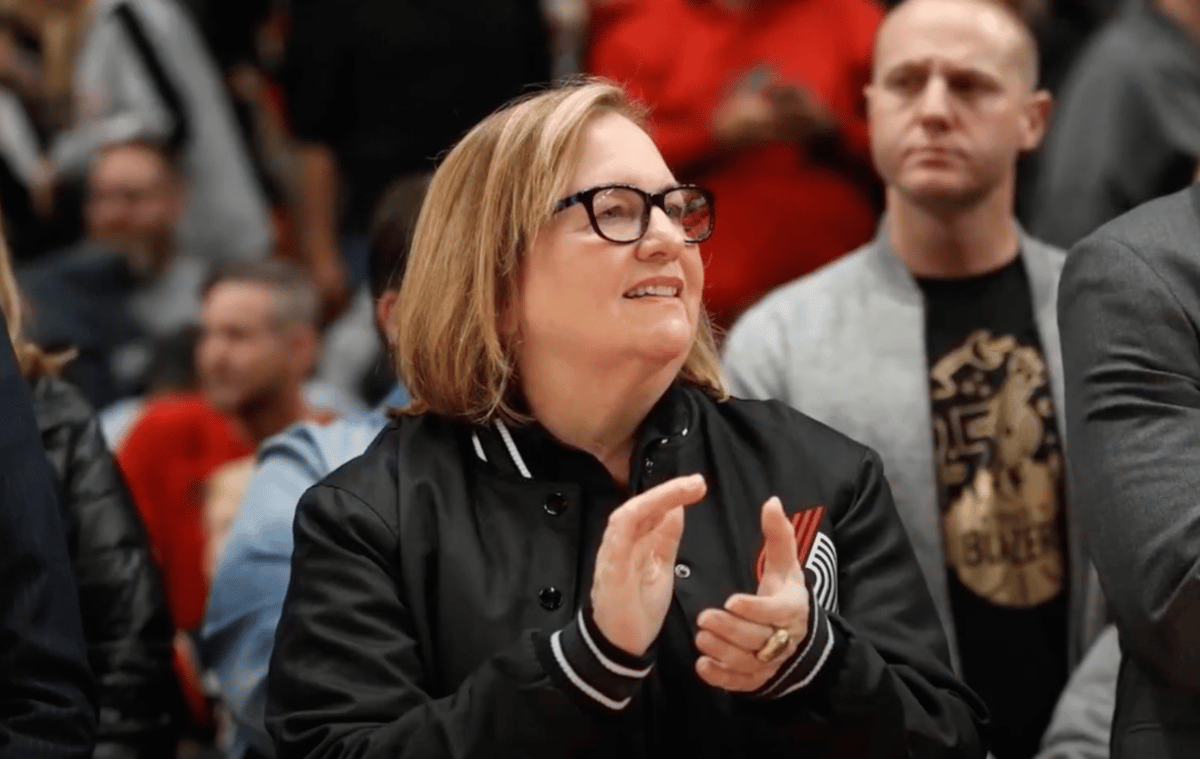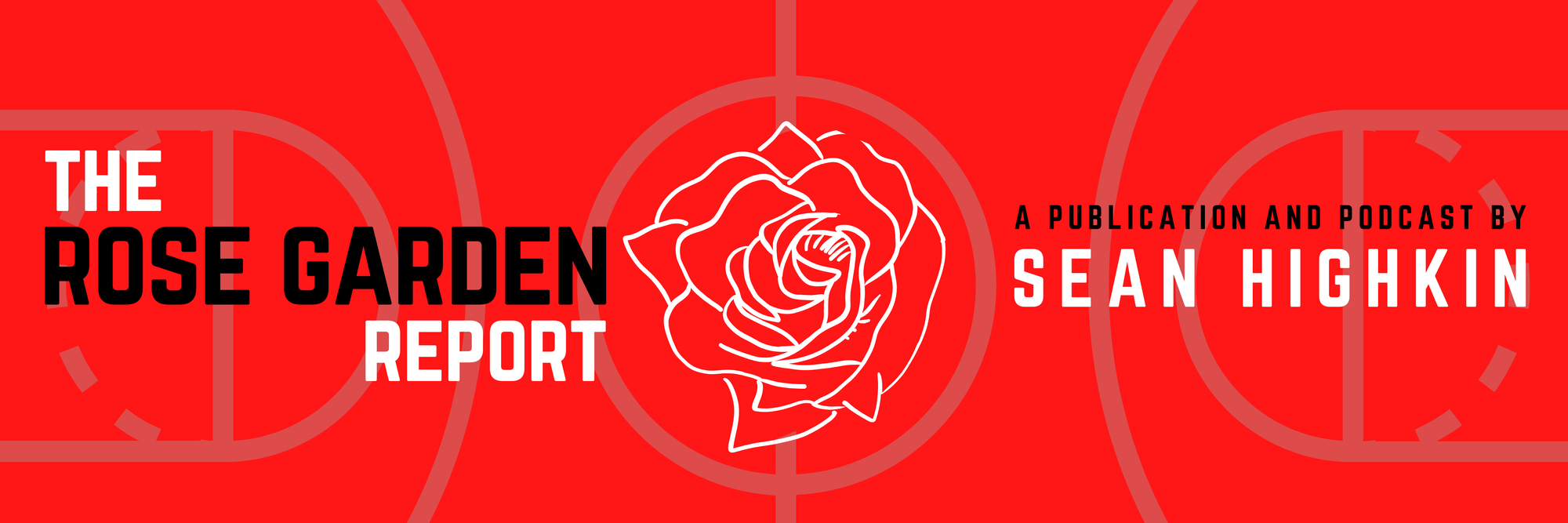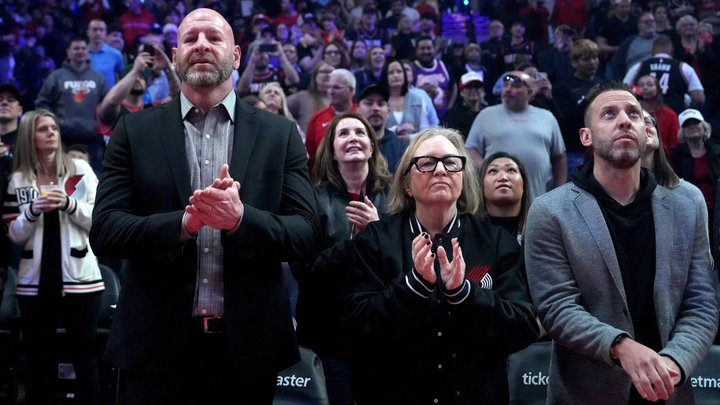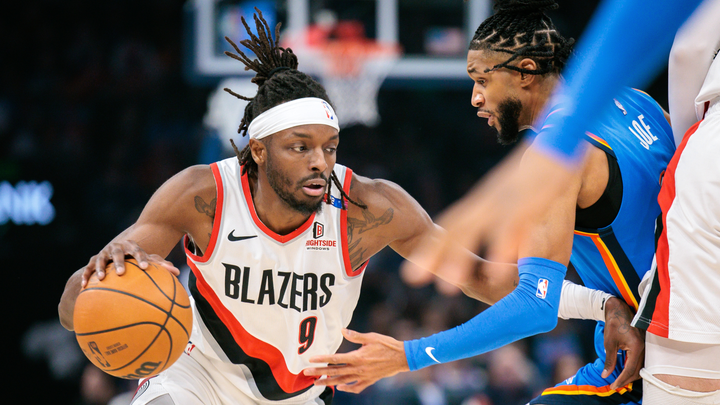MAILBAG (PART 2): Trail Blazers Ownership, Trendon Watford, Impact of the New CBA and More
Answering subscriber questions in the second part of a new mailbag.

Last week, I asked for non-Damian Lillard trade-related mailbag questions and, to my pleasant surprise, got enough to make the mailbag two parts. You can read part one here. That one covers expectations for Chauncey Billups in year three as a head coach, Nassir Little's role, how long it will take the Trail Blazers to get back to playoff contention and more.
Here's part two, covering some different topics than those ones. There's a lot in here. Thanks as always to my subscribers for supplying great questions on a variety of subjects and proving there's more to talk about deep into the offseason than just the Lillard trade saga, on which there are still no real developments.
As always, if you want to participate in the next one, be sure to become a paid subscriber.
Hi Sean,
I have two non-Dame questions for the mailbag...
1: I have yet to see or hear a clear explanation as to why the Blazers waived Trendon Watford. He isn't a future all-star or even future NBA starter, but he has some compelling off-the-bench playmaking skills and at worst seems like a decent guy to have around at the end of the bench for a change of pace during the season. Especially after the way free agency shook out (Drew leaving, Blazers picking up nobody) I don't really get what the rationale was here. What gives?
2: This is more of a curiosity question, but when the Blazers axed GM-who-shall-not-be-named in 2021, there were a lot of rumblings that there was going to be a breach-of-contract lawsuit coming from his end back to the Blazers. Did anything ever happen there? I assume they either settled with him out of court or whatever he did to get fired was so egregious that they were able to compel him to stand down on the threat.... Or perhaps there was never any fire to that smoke to begin with. Any ideas?
- Sean F.
On Watford: It was a combination of two things.
One was wanting to keep as many roster spots open as possible in case they had to take back multiple players in the eventual Lillard trade. The other, more important factor was this: the front office viewed Watford and Jabari Walker as redundant, skill-wise, and they think Walker is a lot better, particularly on the defensive end, so he's the one they kept. Both of them had guarantee dates for their contracts; waiving Watford when they did cleared about $1.7 million off their books, although money wasn't as much of a motivator as roster flexibility.
On a personal level, I liked Watford a lot, and so did everyone on the team. I hope he sticks in Brooklyn.
As far as Neil Olshey's status, I honestly don't know the answer to that. We didn't have much of a relationship when he was in charge (it was beneath his dignity to give most reporters the time of day unless they could do something for him), and I haven't been in touch with him since he was fired. I do know that he's been spotted at various NBA-related events in the past year (including Summer League last month), keeping a low profile but working to keep his name out there. I've had a couple of people who do know him tell me he's trying to get back into the league. In what capacity he'll be able to, I do not know. I don't see him getting another GM job anytime soon, but if Isiah Thomas, Gersson Rosas and Danny Ferry are still finding employment in the NBA, I wouldn't completely rule it out.
I have no idea what's going on with Olshey legally. When the Blazers announced his dismissal, they said he violated their code of conduct, which I assume means they fired him "for cause" and got out of paying the rest of his contract, at least temporarily. I wouldn't be surprised if he settled out of court with the team and got some of his money back, but nobody who would know has ever been willing or able to confirm that when I've asked about it.
Hi Sean,
What type of teams does the new CBA help or hurt? Same goes for players. Am I wrong to think that borderline All-Stars will no longer be receiving the max as much as they did with the previous CBA.
Thanks!
Jon
It's going to be years before we really see what the impact of the new CBA is on player salaries. At the top end, you're seeing how out of whack it can be with teams like Phoenix, who have four stars on max contracts and the other 11 roster spots filled by players on veteran minimum deals. That's one extreme end of the spectrum, and if they don't win in the next couple of years, I wonder if teams are going to be hesitant to follow that blueprint (as the great music writer Ian Cohen brilliantly called it, "the Hot Fuss school of roster-building").
This year in free agency, less than half the teams used the mid-level exception. I wonder if in a few years, there's going to be a shift and when the stars from the last few draft classes come up for their rookie extensions, it will no longer be a lock that the best player on any given team will get the max. As it relates to Portland, we'll see how this plays out in a few years when Shaedon Sharpe and Scoot Henderson are extension-eligible.
I don't have a good answer right now as to how this will all play out, but things are going to change from the way they are now. I've already heard from executives about the CBA changing the way they do business.
Could you discuss the tax consequences of teams? You always hear oh they are in the tax or over the limit, and sometimes you hear it will cost them x amount but who pays it? How is it determined? Any info would be helpful. You don't really hear much about the business side of things or if you do it's all very surface level.
Thanks,
Grant G.
So, there are three levels to the luxury tax. For this coming season, the tax line is set at $165 million, which is $29 million above the $136 million salary cap. Then there's the first apron, which kicks in when teams go at least $7 million above the tax (for this coming year, that number is $172 million). The new CBA that just went into effect on July 1 adds a second apron, which is set at $10 million above the first apron ($182 million) and makes it a lot harder to build a roster.
Purely from the financial side, the tax structure under the new CBA is as follows: teams pay $1 for every dollar they spend into the tax up to $4.99 million, $1.25 for every dollar between $5 million and $9.99 million, then it jumps to $3.50 for every dollar from $10 million to $14.99 million, $4.25 for every dollar from $15 million to $19.99 million, and an additional 50 cents per dollar in $5 million increments above $20 million. The penalties increase if a team is a "repeater" team and pays the tax multiple years in a row.
That part is just money. If the owner wants to spend it (as Mat Ishbia, Joe Lacob, Steve Ballmer and others clearly do), more power to them. As a fan, you shouldn't care about that end of it because it's not your money. You should want your favorite team's owner to be willing to pay whatever it takes to make the team better.
The roster-related restrictions have much more impact on the team, and they've gotten considerably more restrictive in the new CBA. Already, tax teams can't use the full mid-level exception ($12.4 million) and are limited to a smaller one ($5 million per year for two years). Any team that uses more than the taxpayer mid-level becomes hard-capped for the season at the first apron $172 million), which also happens if they take a player back in a sign-and-trade, regardless of their tax status.
Teams that go over the first apron can't sign players on the buyout market during the season. But it's the second apron, which will be phased in starting next season, that really limits you, and has executives and agents worried that it will function basically as a hard cap. Second-apron teams can't use the mid-level exception at all, can't send out cash in trades, can't trade draft picks seven years out, and if they're over the second apron in two out of four years, that frozen draft pick moves to the end of the first round. There's other stuff, too, like rules about combining multiple player salaries in trades.
The point being, once you get into that tax bracket, you're basically going to be forced to build your roster the way Phoenix is, with a few stars making huge money and the rest of the team being minimum guys. You can understand why GMs aren't eager to go there. It goes beyond just whether the owner is willing to write a check.
That's the broadest overview I can give you. There are people in media whose entire specialty is explaining this stuff, so I'd recommend going to them if you want to get even more in the weeds. Those include my former Bleacher Report colleague Eric Pincus, ESPN's Bobby Marks, CBS Sports' Sam Quinn, Spotrac's Keith Smith and the OG, Larry Coon, who runs the invaluable CBA FAQ website.
How do you see the rest of Jusuf Nurkic's career going? Mentor the young Blazers? Get traded and play out the string coming off the bench? Finally healing up and his body giving him a Brook Lopez-light 2nd act of his career?
Anne M.
My assumption from the beginning has been that part of the eventual Lillard trade will involve offloading Nurkic's salary. But I've also thought it was a lock he would be traded at both of the last two trade deadlines and he wasn't, so I'm out of the Nurkic trade prediction business until further notice.
If—if—he's still here post-Lillard, Nurkic will be the clear-cut starter at center, and he'll have plenty of touches. One thing I'll be watching is what happens with the three-point shooting. Last year, he put up 2.3 attempts per game from deep, easily a career high, and shot a respectable 36.1 percent on them. Whenever we asked Chauncey Billups about it, he told us that he was fine with Nurkic shooting them if he's open but that he kept him on a pretty tight leash if he missed one or two. If the Blazers are rebuilding and it doesn't matter if they're winning games or not, that leash will be off and he'll be jacking them up.
I've never considered the Brook Lopez comparison before, but Lopez's second-half career arc is such an incredible outlier that you can't really expect anyone to replicate it. I've never seen a center go from a complete non-shooter to a 35-plus-percent three-point shooter in his mid-30s while also going from being a defensive liability to a legitimate DPOY candidate. Lopez's reinvention has been nothing short of remarkable.
I don't expect that from Nurkic, but he's still an effective rim protector if he's healthy. That hasn't been something you can count on in the years since the 2019 leg injury. It's probably better for everyone—both him and the Blazers—if there's a clean break, and maybe that happens with a Lillard trade. But they don't exactly have a replacement lined up, either.
1) Acknowledging basketball is edging towards positionless play in some ways, in your opinion is small forward or center the bigger problem going forward? Can Shaedon play 3? Nurk is here now and there are guys in the pipeline but none look like starter material to me. Curious as to your thoughts?
2) I noticed you hinted about the WNBA on a recent podcast. Anything you can share on Portland's chances?
Take it easy,
Matt A.
Center is definitely the bigger problem long-term, as things stand right now. The Blazers don't have a clear-cut starter at small forward, but they have guys, plural, who are proven NBA rotation players in Matisse Thybulle and Nassir Little.
At center, they have Nurkic and…not much else. Ibou Badji is an intriguing prospect, but he's never played in an NBA game before and he's still, in Bruno Caboclo terms, two years away from being two years away. Jabari Walker and Jerami Grant will see some time at center in smaller lineups. That's kind of it. And Nurkic, as we've said, can't be counted on to stay healthy. So it's a problem that will need to be solved.
On the potential for Portland to get a WNBA expansion team: Nothing definitive right now as far as timing, but people I've talked to recently who know what's going on with the effort are optimistic they have a real shot. We'll see what happens.
What is the realistic timeframe for the team to be sold?
- Paul O.
Hi Sean,
Appreciate your coverage of the Blazers!
Since Paul Allen passed, there has been varying degrees of fan displeasure over the ownership of Jody Allen (and leadership of Bert Kolde). Other than long-term stability, has Jody Allen really done anything that would make her worse than an average NBA owner? It seems like fans are taking the easy way out by putting blame on Jody, and other than a couple suspiciously-timed articles coming out in the last year, I haven't seen a lot of concrete evidence that her ownership is sabotaging the team.
Thanks!
- Brian D.
Grouping these two questions together because they both deal with ownership. I have nothing new to report on the timing of a potential sale—the Vulcans' only public comment on it has been that it could take "10 to 20 years," and the NBA and Phil Knight are pushing behind the scenes to speed things up. Given that Knight is 85, he and the league would like to get it done while he's still around. But there hasn't been any movement that I know of in the months since the Wall Street Journal story came out in early June.
I tend to agree with you that blaming Jody Allen for things is more of an easy default target for fans than anything concrete you can point to. Does she live and breathe the Blazers and basketball like her brother did? No. Would it be great for the team to be owned instead by someone who does? Yes. But everyone I've talked to on both the business and basketball sides of the organization has told me consistently that she's been nothing but supportive and willing to spend money on things they thought were worth it, be it upcoming renovations to the Moda Center or allowing Cronin to make numerous front-office hires once he got the permanent GM job a year ago.
I've said this before, and I'll say it again: Jody doesn't do herself any favors by being invisible. She's at games, but she's never done any kind of interview or press conference since she took over the team following her brother's death in 2018. I've never even met her, and I've been covering the team for the entire time she's been in charge. I've made it known to higher-ups in the organization that I'd love to talk to her if she was ever open to doing an interview. Something multiple people who know her have told me is that "the public would like her if they got to know her." Like everyone else, I just have to take their word for it. Paul Allen didn't do a ton of interviews, especially towards the end of his life when his health was worsening, but he did stuff occasionally. People heard from him.
Jody doesn't need to be out there all the time to the point that it's a detriment, like Mark Cuban, but there's a middle ground that could be struck between that and never saying anything at all. The perception of her that's out there now—which is largely driven by people like Phil Knight who have an interest in making her look bad so people will want her to sell the team to them—may change if she'd let us get to know her. Unless she does that, there's no way to fight the image of her that most fans seem to have.
Hey Sean,
I really love your work. Thanks for all your reporting and content.
Right now, it looks like the starting lineup on opening night would be Scoot, Ant, Tisse, Jerami, and Nurk (assuming he’s not a part of the Dame trade), with Shaedon coming off the bench. But long term, I think the team considers him a starter.
So with that in mind, what do you think the biggest differences are from Scoot, Ant, Shaedon & Dame, CJ, and Norm 3-guard lineups? I believe Shaedon is more equipped to play the 3 than Norm, but I think he’s best suited to play the 2. And I think Ant is best to be a lead guard/point guard. So in the grand scheme of things, I think the same/similar problems will present themselves.
My question is, does the front office view that as a long-term viable option? Or do you think one of those players will ultimately be moved for a better long-term fit? And if Ant couldn’t get a difference-maker this offseason, what optimism is there that he would be able to get a difference-maker moving forward?
Thanks again for all the great content,
Andrew
Hi Sean,
Assuming a Dame trade, there have been different takes on whether Ant/Scoot/Shaedon can play together or if a trade would be necessary to avoid a logjam at shooting guard. Do you have any feel on how likely it is they keep that young core together and play Shaedon at the three?
Thanks,
Matthew B
I do think the Scoot-Simons-Sharpe trio is a little less duplicative than the Dame-CJ-Norman Powell lineups the Blazers have run out in the past, but it's still to small for me to think it's a viable path forward. This is especially true if Sharpe turns out to be as good as people in the organization think he will be. I agree with Andrew that they view him as a long-term starter, and that will either involve moving Simons to the bench or trading him. They don't have to answer that question right away, but it's something that should be on the radar.




Comments ()